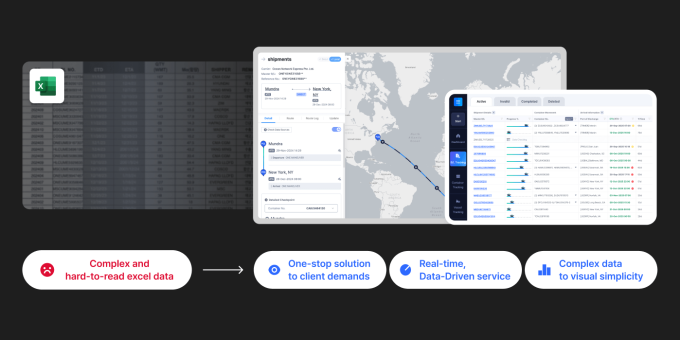

While artificial intelligence and robotics are transforming logistics, much of the multi-trillion dollar freight industry still relies on spreadsheets made for the 1980s. This “digital divide” has become a major operational risk: a typo or missing update can ripple through global supply chains, causing costly delays and eroding customer trust.
High cost of manual tracking
Logistics professionals often start their day manually updating spreadsheets with data pulled from multiple carrier websites, a time-consuming routine that creates bottlenecks among operations.
Fragmented information: Managing hundreds of containers associated with multiple Master Bills of Lading (MBLs) at different websites with incompatible formats leads to operational chaos.
Poor data accuracy: Repeated manual entry is a major source of error that directly causes shipping delays and damages customer confidence.
Barriers to growth: A customer case study showed that tracking just 10 shipments could take two to three hours a day, making it economically impractical to scale operations without adding employees.
Ultimately, teams spend valuable time chasing shipments instead of focusing on high-value work, and companies absorb the cost of this inefficiency.
TRADLINX Dashboard: A centralized real-time control tower
The TRADLINX integrated dashboard solves these challenges by consolidating all cargo data into a single control tower, providing a source of truth.
The main advantages of the platform are:
Effortless data integration: Sticking MBL numbers on the dashboard is all it takes to automatically merge data from multiple carriers in 10 seconds.
High frequency and reliability of updates: The platform automatically refreshes carrier data every 1-2 hours, ensuring users have access to real-time information without manual intervention. The dashboard clearly displays the ETA and changes color based on the ATA for at-a-glance confirmation.
Preventive risk management: The system automatically flags delays with color-coded alerts based on severity—yellow (more than 24 hours), orange (more than 2 days), and red (more than 4 days)—allowing teams to respond proactively. An optional “Route Log” feature with an update frequency of 30 minutes provides accurate vessel locations when carrier data is sparse.
Efficient reporting and sharing: A comprehensive “daily report” can be generated with one click and automatically emailed to clients. Beneficiaries can also be given a “share link” to display a real-time map of their shipments, increasing transparency.
From operational efficiency to a strategic asset
Adopting a digital platform changes the way a company makes decisions and accelerates growth. The TRADLINX dashboard provides visual analysis of latency trends by country and month, providing valuable insights for annual planning and carrier performance reviews.
The platform is built for scale. Companies handling more than 500 shipments per month can use the TRADLINX API to integrate all functions directly into their existing ERP systems. An employee who once handled 10 shipments in two to three hours can now handle 100 shipments in the same amount of time. The time saved (typically 20-40% of manual labor hours) can be invested in customer service and new business development.
This capability is provided through a transparent pricing model starting at $3 per BL per month, with no additional fees for multiple containers under one MBL, which significantly reduces the cost of tracking each container.
Digitization: the new standard in logistics
In today’s supply chain environment, relying on analog methods is no longer viable. An integrated digital management system is now essential for flexibility, efficiency and long-term competitiveness. Companies that effectively use real-time data will be best positioned to navigate market volatility and achieve sustainable growth.